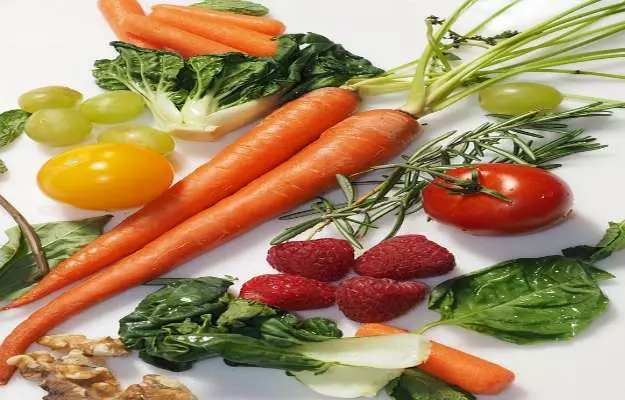11
Common Health Care / দুপুরে যতটুকু ঘুমালে রাতের ঘুমে ব্যাঘাত হবে না
« Last post by Rasel Ali on May 01, 2025, 09:07:22 PM »
দুপুরের অল্প ঘুম ভালো প্রভাব ফেলে। তবে বেশিক্ষণ ঘুমালে বাড়তে পারে হৃদরোগের ঝুঁকি।
দিনের বেলায় একটু চোখ লেগে আসলে অনেকেই ভাবেন, ‘বাহ, বেশ বিশ্রাম হল।’ তবে সবসময় কি তাই হয়?
কখনও কখনও আবার এই ঘুম থেকেই উঠে মনে হয় যেন মাথা ভার, শরীর অবসন্ন আর রাতে ঘুম আসেও না।
তাহলে কি দিনের ঘুম ক্ষতিকর? মোটেই না। বরং সঠিক সময় আর নিয়ম মেনে ঘুমালে এই ঘুমই হতে পারে মনের প্রশান্তি আর শরীরের পুনর্জাগরণের টনিক।
এই বিষয়গুলো নিয়ে রিয়েলসিম্পল ডটকম’য়ে প্রকাশিত প্রতিবেদনে যুক্তরাষ্ট্রের স্নায়ুবিজ্ঞানী মেজর অ্যালিসন ব্রাগার এবং ‘ব্রিগহ্যাম অ্যান্ড উইমেন’স হসপিটাল’য়ের ‘পুলমোনারি, ক্রিটিকাল কেয়ার এবং স্লিপ ফিজিশিয়ান’ ড. ক্যারোলিন ডি’অ্যামব্রোসিও জানিয়েছেন বিস্তারিত।
কতক্ষণ ঘুমানোই সঠিক?
ডা. ডি’অ্যামব্রোসিও বলছেন, “যদি ঘুমাতে হয় তবে ২০ মিনিটের মধ্যেই ঘুম শেষ করুন।”
কেননা ২০ মিনিটের ‘ক্যাটন্যাপ’ শরীরকে হালকা ঘুমে রাখে, গভীর ঘুমে না গিয়েই সতেজতা ফিরিয়ে আনে।
৩১ মিনিট পার হলেই ব্যক্তি পৌঁছে যায় গভীর ঘুমের স্তরে, ফলে হঠাৎ করে উঠে পড়লে শরীর ও মনে ক্লান্তির প্রভাব পড়ে। তবে কিছু ব্যতিক্রম রয়েছে।
যেমন- যারা ‘নাইট শিফট’ বা রাতের বেলায় কাজ করেন, জরুরি পেশায় যুক্ত থাকেন কিংবা গর্ভবতী, তাদের জন্য ৯০ মিনিটের একটি ‘দীর্ঘ’ ঘুম উপকারী হতে পারে।
৯০ মিনিট মানে এক পূর্ণ ঘুমচক্র। এতে মস্তিষ্ক বিশ্রাম নেয়, মনে থাকে না ক্লান্তি।
ডা. ডি’অ্যামব্রোসিও জানান, গবেষণায় দেখা গেছে- ৪০ মিনিটের তুলনায় ৯০ মিনিটের ঘুম ক্রীড়াবিদদের মনোযোগ, শক্তি, মেজাজ এবং পেশি পুনর্জাগরণে অনেক বেশি উপকারী।
দিনের ঘুমের উপকারিতা
নানান ধরনের উপকারিতা রয়েছে দিনের ঘুমে-
মেজাজ ঠিক রাখা ও চাপ কমানো: ক্লান্ত লাগছে? মন খারাপ? একটু ঘুমিয়ে নিন। বিশেষজ্ঞরা বলছেন, এটি মস্তিষ্কের রিসেট বাটনের মতো কাজ করে। একটুখানি ঘুম আবার সচেজ করে তুলতে পারে।
শারীরিক ও মানসিক কর্মদক্ষতা উন্নত করা: মেজর ব্রাগার মার্কিন সেনাবাহিনীতে ঘুম ও কর্মক্ষমতা বিষয়ক গবেষণা করেছেন।
তার মতে, “ঘুম সবদিক থেকেই কর্মদক্ষতা বাড়ায়। শরীরের শক্তি, মানসিক কার্যক্ষমতা, শেখার দক্ষতা সবই বাড়ে।”
আরও বলেন, অনেক বড় মাপের ক্রীড়াবিদ ও সেনাসদস্যরা নিয়মিত ঘুমিয়ে নেন দিনের বেলাতেও।
হৃদযন্ত্র ভালো রাখা: সুইজারল্যান্ডের এক গবেষণায় দেখা গেছে, যারা সপ্তাহে দিনের বেলা এক-দুবার করে ঘুমান তাদের হার্ট অ্যাটাকের ঝুঁকি কম।
তবে সাবধান! দিনের পর দিন দীর্ঘ ঘুম, বিশেষ করে এক ঘণ্টার বেশি হলে বিপদও বাড়ে।
২০১৫ সালের একটি ‘মেটা-অ্যানালাইসিস’য়ে দেখা যায়, যারা দিনে ঘণ্টাখানেক বা এর বেশি ঘুমান, তাদের হৃদরোগের ঝুঁকি প্রায় দ্বিগুণ।
ডা. ডি’অ্যামব্রোসিও বলেন, “ঘুমানো ক্ষতিকর নয়, বরং নিয়মিত দিনের ঘুম অনেক সময়ই ইঙ্গিত দেয় যে রাতের ঘুম ভালো হচ্ছে না। আর ঘুমের এই দুর্বলতা থেকেই হৃদরোগ, ডায়াবেটিস, বিষণ্ণতা ও দুর্ঘটনার আশঙ্কা বাড়ে।”
কাদের জন্য দিনের ঘুম বিশেষ দরকার?
রাতের বেলায় কাজ করা কর্মীদের দিনের বেলা ঘুম দরকার। এতে শরীর শক্তি ফিরে পায়।
গর্ভবতী নারী যাদের রাতের ঘুম বারবার ভেঙে যায়।
নবজাতকের মা-বাবা, যাদের ঘুম হয় খণ্ড খণ্ড।
দিনের ঘুমিয়ে নেওয়ার সেরা কৌশল
ঘুমের কারণ বুঝে নেওয়া
ডা. ডি’অ্যামব্রোসিও বলেন, “প্রতিদিন যদি সাত থেকে আট ঘণ্টা নিয়মিত ঘুম হয়ে থাকে, তাহলে দিনে ঘুমের দরকার পড়ে না। বরং এটি হতে পারে অন্য কোনো শারীরিক বা মানসিক সমস্যার ইঙ্গিত।”
ঘন ঘন ঘুমের ইচ্ছা থাকলে চিকিৎসকের পরামর্শ নিতে হবে।
ঘুমান দুপুরে, বিকেলে নয়
“বিকেল তিনটার পর ঘুমালে রাতের ঘুমে সমস্যা হতে পারে”- বলেন ডি’অ্যামব্রোসিও। তাই ঘুমাতে হলে দুপুর একটা থেকে দুটার মধ্যে ঘুমিয়ে নিতে হবে।
কফি ও ন্যাপ: কফিন্যাপ কৌশল
হ্যাঁ, ঘুমানোর আগে এক কাপ কফি পান করে তারপর ২০ মিনিটের ঘুম— একে বলে ‘কফিন্যাপ’।
কারণ, ক্যাফেইন শরীরে কাজ শুরু করে ২০ মিনিট পর, তখনই জেগে যাবেন আর একদম তরতাজা লাগবে।
ঘুমের পরিবেশ তৈরি করা
অন্ধকার, ঠাণ্ডা, নীরব— এমন ঘর বেছে নিতে হবে। মোবাইল, টিভি বন্ধ রেখে মন হালকা রাখা জরুরি।
যখন সতর্ক হওয়া প্রয়োজন
বারবার ঘুমানোর ইচ্ছা, এক ঘণ্টার বেশি দিনের ঘুম, দিনের ঘুমেও ক্লান্ত লাগা- এই লক্ষণগুলো দেখা দিলে দ্রুত চিকিৎসকের পরামর্শ নিতে হবে।
এটা হতে পারে ‘স্লিপ অ্যাপনিয়া’র মতো রোগের লক্ষণ। আবার বিষণ্নতারও ইঙ্গিত হতে পারে।
মেজর ব্রাগার বলেন, “ঘুম ঠিক না হলে যতবারই ঘুমান না কেনো, তা কাজে আসে না। বরং সঠিক রাত্রিকালীন ঘুমই সুস্থ রাখে।”
আরও পড়ুন
হাই তোলা ধারণার চাইতেও বেশি বিপজ্জনক হতে পারে
দিন শেষে শ্রান্তি ঝেরে ফেলার রুটিন
জনপ্রিয় খাবার তবে ঘুমের জন্য ক্ষতিকর
collected from: https://bangla.bdnews24.com


 Recent Posts
Recent Posts



